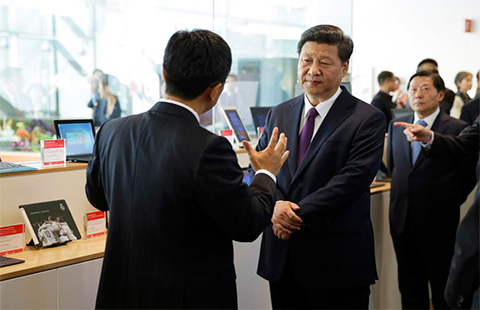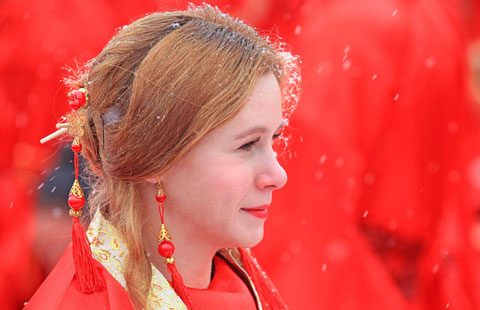The mechanism for guaranteeing education has improved. In tandem with the rest of China, Xinjiang has implemented the policy of "two exemptions and one subsidy" - exemption from miscellaneous fees and textbook fees, and subsidized living expenses for resident students, and abolishing tuition and miscellaneous fees for urban primary and middle schools and realizing free compulsory education. The policy of "three exemptions and one subsidy" has been implemented for high schools and secondary vocational schools in the four prefectures of southern Xinjiang, i.e., exemption from tuition, textbook and boarding fees, and subsidized living expenses for resident students, in order to realize 14-year free education there. A nutrition improvement program has also been implemented for all rural students undertaking compulsory education, covering 36 counties and all junior high school classes specially set up in some cities in Xinjiang for minority students from remote impoverished areas. A system for subsidizing students from pre-school to higher education has been established, and its coverage even extends to students from Xinjiang studying overseas at their own expense, ensuring that students from all ethnic groups enjoy equal access to education.
Public health has been improved steadily. Through 60 years of development, total healthcare resources continue to expand, while the health service system continues to improve. As a major indicator of people's livelihood, since 2010, financial input in healthcare has kept growing. In 2014, Xinjiang boasted 18,873 medical and health institutions at various levels and of various types, manned by 153,417 health professionals. In the region, every 1,000 people averaged 6.22 hospital beds, 2.38 licensed (assistant) doctors and 2.60 registered nurses, a level higher than the national average. The health emergency response capacity has been significantly enhanced, and major epidemic and endemic diseases have been brought under effective control. Key health indicators have improved remarkably. From 2010 to 2014, the infant mortality rate fell from 2.66 to 2.16 per thousand, the maternal mortality rate went down from 43.41 to 39.27 per 100,000, and average life expectancy reached 72.35 years.
There has been a steady improvement in the provision of social security. In 2011, Xinjiang led the country in establishing systems of basic old-age insurance and basic medical insurance that gave overall consideration to both urban and rural areas and cover all the local population, providing everyone access to basic social security. The coverage of the new cooperative medical system for agricultural and pastoral areas was 99.7 percent. The coverage of the new rural social pension insurance reached 98.5 percent. Unemployment, work-related injury and maternity insurance systems have been extended to cover all occupational groups. In 2014, there were 33.5 million registrations in Xinjiang's various social insurance schemes, an increase of 10.73 million or 47 percent over 2009. The coverage of these insurance schemes exceeded 90 percent, essentially ensuring that all those in need of insurance are provided for.
For 10 consecutive years, Xinjiang has adjusted the basic pension for enterprise retirees, increasing the basic monthly pension from an average of RMB1,338 in 2009 up to RMB2,298 in 2014, a level of increase that tops the whole country. For four consecutive years, the unemployment insurance benefits have been increased, with the per-capita average monthly unemployment insurance reaching RMB761 in 2014. The annual per-capita government subsidy for urban residents' medical insurance was raised from RMB120 in 2009 to RMB330 in 2014, RMB10 higher than the national average.

 Here's what's on the menu for the state dinner
Here's what's on the menu for the state dinner
 President Xi visits Microsoft campus in Seattle
President Xi visits Microsoft campus in Seattle Xi revisits Lincoln High School after 1993 bond
Xi revisits Lincoln High School after 1993 bond
 Chinese, US business leaders gather at roundtable meeting
Chinese, US business leaders gather at roundtable meeting Xi visits assembly line of plane manufacturer Boeing in US
Xi visits assembly line of plane manufacturer Boeing in US First Lady tours Fred Hutchson Cancer Research Center
First Lady tours Fred Hutchson Cancer Research Center
 Boeing to sell 300 planes to China
Boeing to sell 300 planes to China Sino-US ties need more understanding: Xi
Sino-US ties need more understanding: Xi















